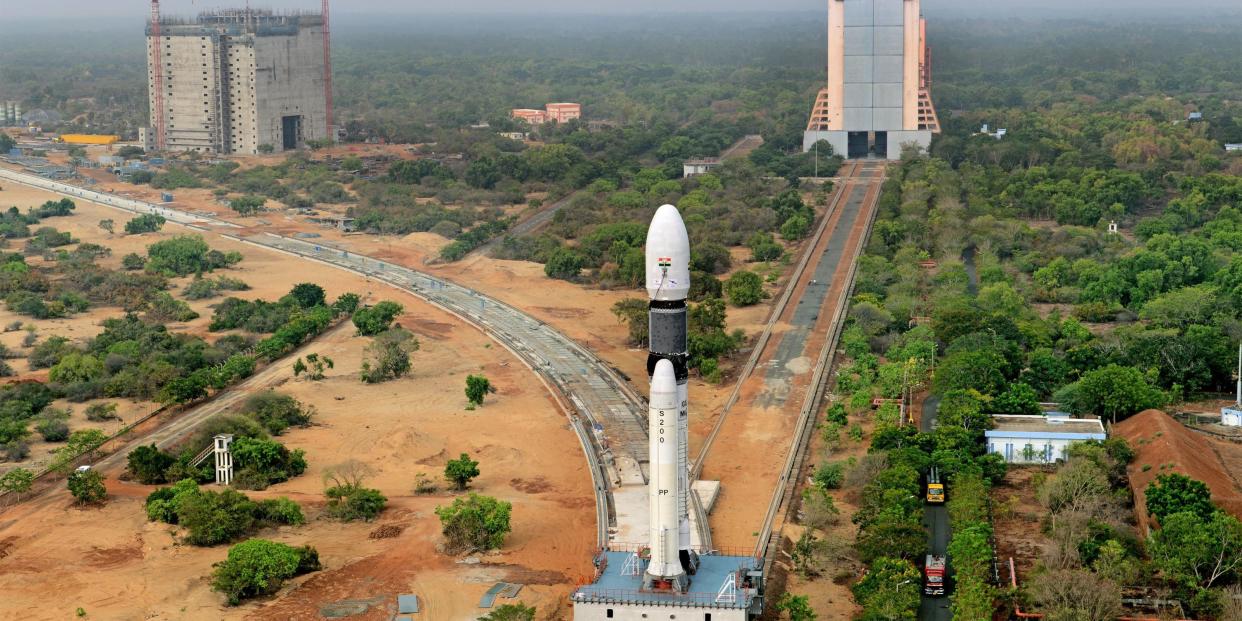ISRO Just Launched a Rocket That Will One Day Take Indian Astronauts to Space

The Indian Space Research Organisation (ISRO) successfully launched a new rocket to orbit this morning at 7:58 a.m. EDT, 5:28 p.m. local time at the Satish Dhawan Space Centre on the barrier island of Sriharikota off India's east coast. The Geosynchronous Satellite Launch Vehicle Mark III (GSLV Mk III) launched for the first time in its full configuration, lofting the 6,914-pound GSAT-19 to a geostationary transfer orbit (GTO). The GSAT-19 is the heaviest satellite ISRO has ever launched, demonstrating new capability to launch heavier payloads.
GSLV MkIII-D1/GSAT-19 Mission lifts off. Here's to the real heavy weight! #ISRO pic.twitter.com/DaYhIvZz2F
- TeamIndus (@TeamIndus) June 5, 2017
The GSLV Mk III had flown previously on test flights, but without the upper stage of the launch vehicle. Today's launch marks the first full flight of all three stages of the larger rocket. The launch had clean stage separations and deposited GSAT-19 in (GTO) where it will fire boosters itself to climb higher to a stationary orbit.
When ISRO first tested the GSLV Mk III back in December 2014, the space agency only flew the lower stages of the rocket on a suborbital flight. That first test, however, included a prototype crew capsule. India is hoping to eventually use the GSLV Mk III to carry astronauts to space, which would make the country only the fourth nation in the world to launch their own astronauts.
The Indian space agency has become a world leader in rocket launches, operating the highly reliable Polar Satellite Launch Vehicle (PSLV). That rocket successfully carried a record 104 satellites to orbit earlier this year, most of them small cubesats. The introduction of a new heavier rocket greatly expands the capability of ISRO to launch a wide range of payloads to various orbits around the globe. In the coming years, it could also help the nation develop a manned spaceflight program, a major achievement for any country.
You Might Also Like

